TS
boleroes11
SAM MM - 23 HAWK.
SAM MIM-23 HAWK. Half a century in the service
In 1960, the U.S. Army adopted a new anti-aircraft missile system MIM-23 HAWK. The operation of these systems in the U.S. military continued until the early two-thousand years, when they have been completely superseded by more modern means of destruction of air targets. Nevertheless, the HAWK missile systems of various modifications are still in use in several countries. Despite his age, family SAM MIM-23 still remains one of the most common systems in its class.
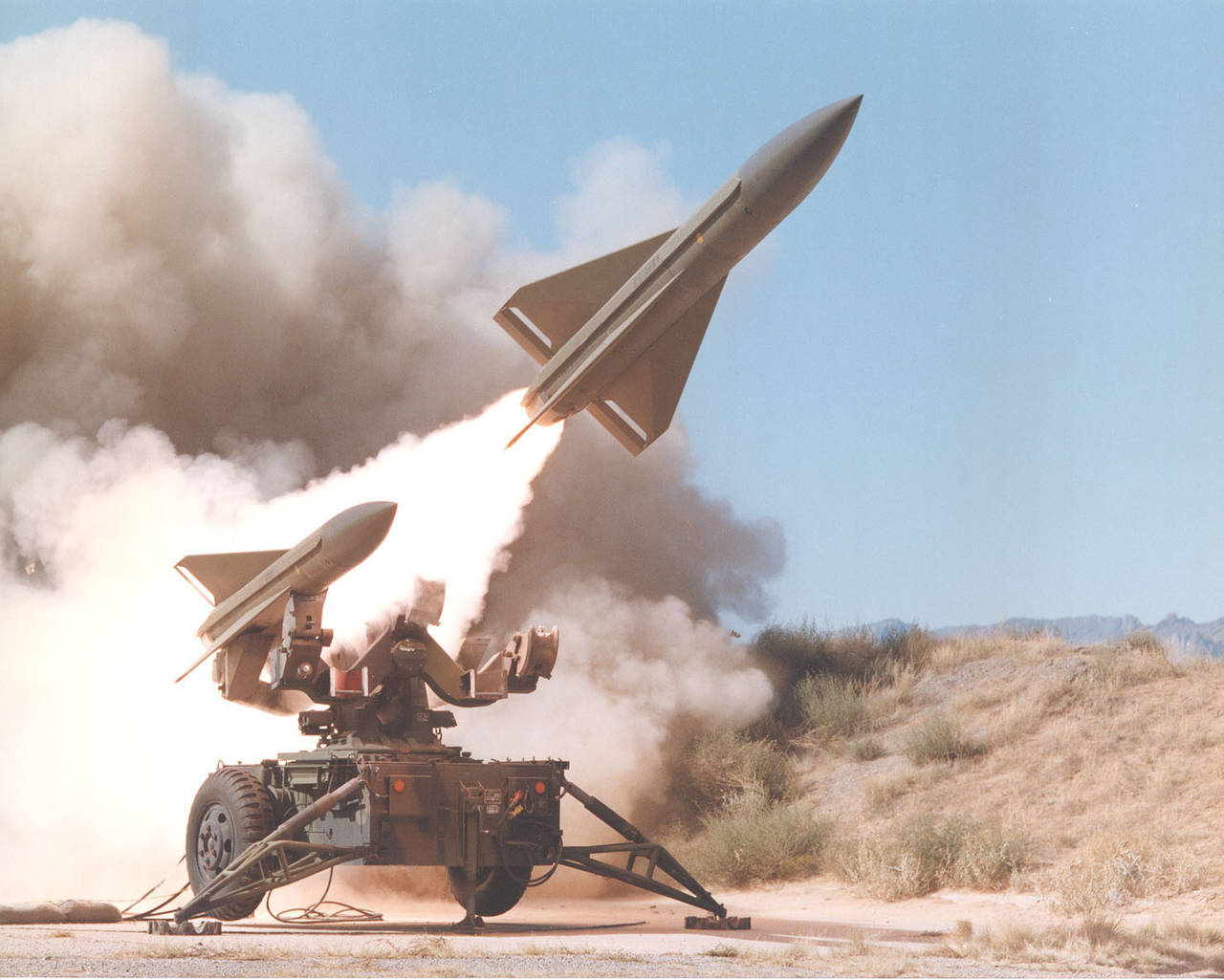
The first draft
Working on a new air defense missile system started in 1952. During the first two years of research organizations of the United States, examine the possibility of creating a semi-active radar SAM guidance system and find out what technologies are necessary for the appearance of such military equipment. Already at this stage, the program create air defense system got its name. As a notation for future aircraft missile systems was chosen words backronym Hawk («Hawk») - Homing All the Way Killer («Interceptor controlled throughout the flight.")
Preliminary work has shown the existing capabilities of American industry and allowed to start development of a new air defense system. In mid-1954 the Pentagon and several companies have signed contracts for the development of the various components of the complex HAWK. In accordance with these firm Raytheon was to create a guided missile, and from the Northrop was required to develop all the terrestrial components of the complex: the launcher, radar, control system and auxiliary machines.
The first test launch of the new model were held in June 1956. HAWK SAM test lasted for a year, after which the project developers have begun to remedy the deficiencies identified. In the summer of 1960 the U.S. military adopted a new anti-aircraft system into service under the designation MIM-23 HAWK. Soon after the serial delivery systems to combat units. Later in connection with the start of production of new anti-aircraft base modifications received renewed designation - MIM-23A.
The structure of the complex HAWK anti-aircraft guided missile were included MIM-23 self-propelled launcher, radar detection and illumination purposes, radar rangefinder control post and the command post of the battery. In addition, the calculation of SAM is located near the auxiliary equipment for transport and charge different models of machines.
Aerodynamic shape missiles MIM-23 was formed in the early stages of work on the project and since then did not undergo any major changes. Guided missile had a length of 5.08 meters and a diameter of 0.37 m hull aft of the rocket had X-shaped wing span of 1.2 m with rudders over the entire width of the trailing edge. Launch mass - 584 kg, 54 kg accounted for the high-explosive fragmentation warhead. Features rocket MIM-23A, equipped with a solid engine, allowing you to attack targets at ranges of 2-25 km and altitudes of 50-11000 m Probability of hitting one rocket declares at 50-55%.
To monitor the airspace and target detection in the HAWK SAM was included radar AN/MPQ-50. During one of the first upgrades in the equipment antiaircraft complex was introduced radar detecting low-altitude targets AN/MPQ-55. Both systems were equipped with radar antenna rotation synchronization. With their help, managed to eliminate all the "dead zone" around the position of the radar. MIM-23A missile equipped with semi-active radar guidance system. For this reason, the complex was introduced HAWK radar target illumination. AN/MPQ-46 illumination station could not only provide guidance missiles, but also to determine the distance to the target. Features Allows radar detection of enemy bombers at a distance of 100 kilometers.
For new missile launcher was created with three guides. This system could be carried out in a self-propelled and towed versions. After detection of the target and determine its zenith complex coordinate calculation was deployed launcher toward the target and enable locator illumination. Homing missiles MIM-23A could capture goal as before the launch and in flight. Guidance managed ammunition produced by the method of proportional convergence. When approaching missile to the target by a predetermined distance radio controlled fuses gave the command to undermine fragmentation warhead.
For delivery of missiles and equipment to position the launcher was developed transport and loading vehicle M-501E3. Machine on a light crawler equipped with the charging device with hydraulic allows you to put on three rocket launcher at the same time.
Anti-aircraft missile complex MIM-23A HAWK has demonstrated the ability to create a system of this class that uses semi-active radar guidance. However, inadequate component base and technologies affected the real possibilities of the complex. Thus, the base case HAWK could simultaneously attack a single target, and a corresponding effect on its combat capabilities. Another serious problem was a small electronics resource: some modules that used vacuum tubes, MTBF does not exceed 40-45 hours.

M192 launcher
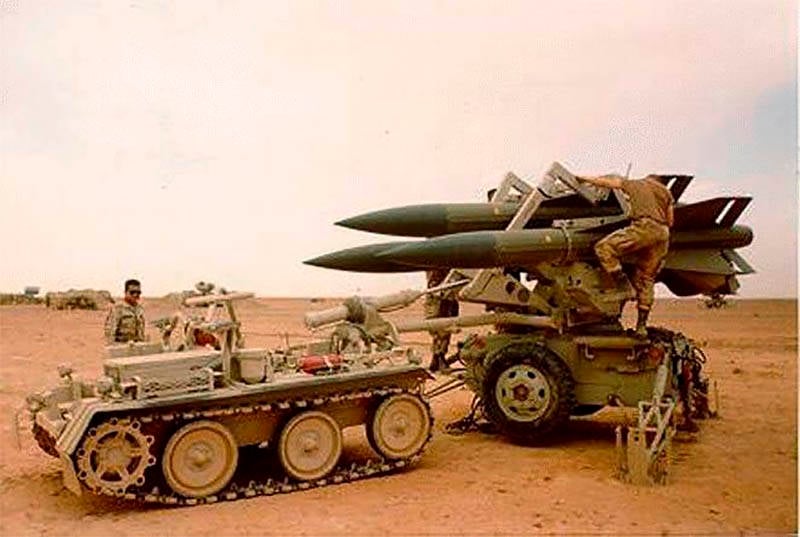
Transport-loading machine M-501E3
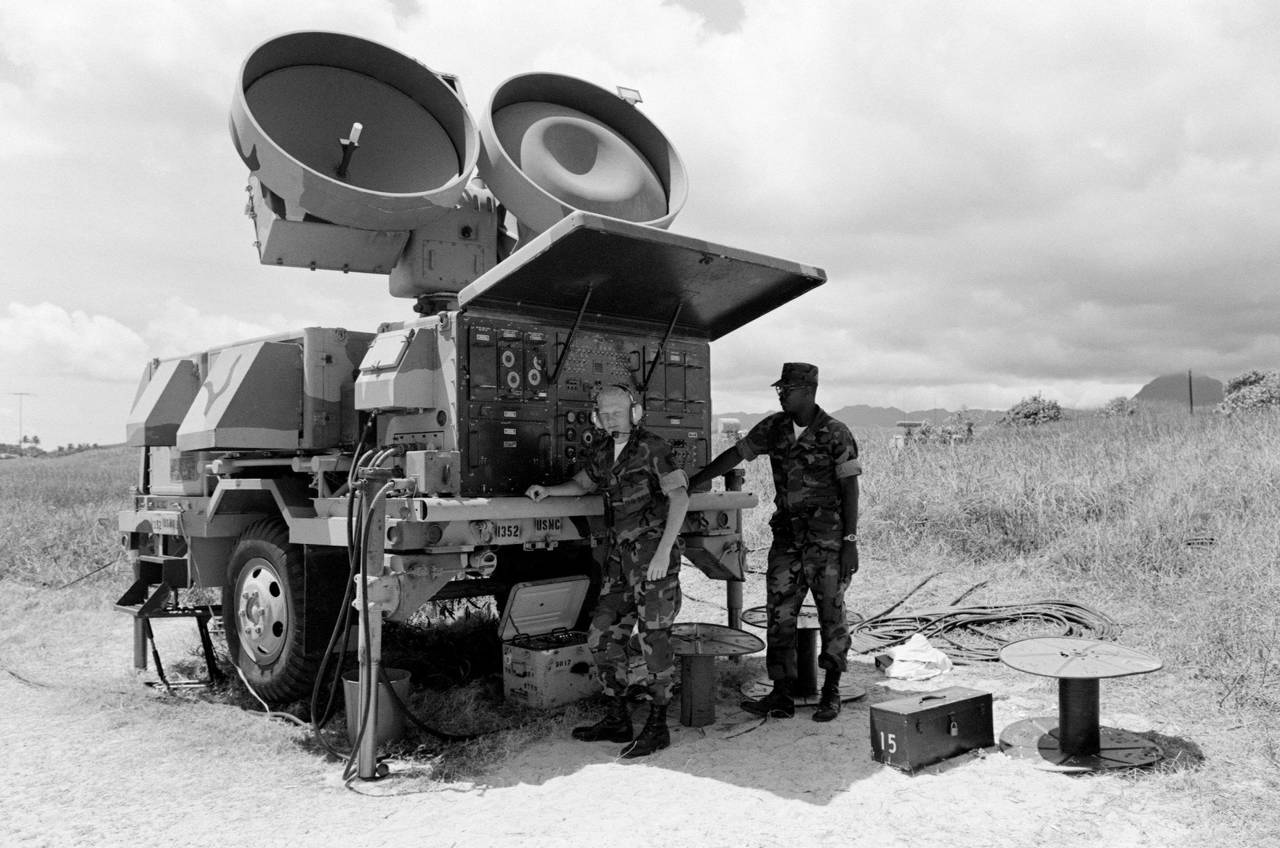
Pulse radar targeting AN/MPQ-50
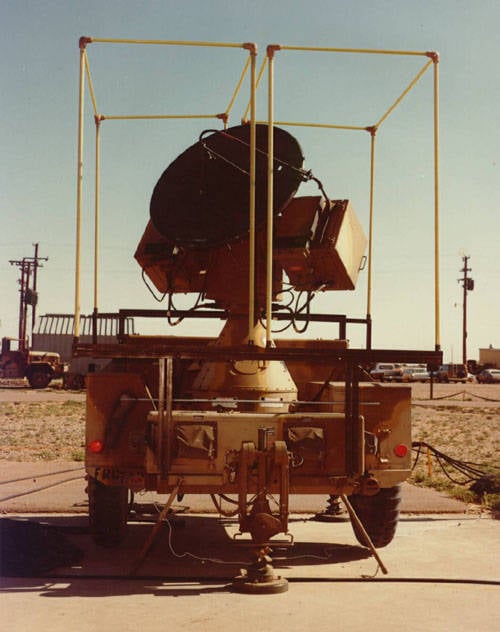
Radar targeting AN/MPQ-48

Upgrade Projects
Anti-aircraft MIM-23A HAWK has significantly increased the potential defense of U.S. troops, but the shortcomings questioned his fate. Required to upgrade capable to infer the characteristics of systems to an acceptable level. Already in 1964, started work on the project Improved HAWK or I-HAWK («Superior HAWK»). During this upgrade was supposed to significantly improve the characteristics of the missiles, as well as update the terrestrial components of the complex, including the use of digital equipment.
Basis became modernized SAM missile modification MIM-23B. She received an updated avionics and a new solid-propellant motor. Rocket design and as a consequence, the dimensions remain the same, but increased the starting weight. It gained up to 625 pounds, upgraded missile has expanded its capacity. Now interception range ranged from 1 to 40 kilometers, the height - from 30 meters to 18 km. New solid rocket motor provided MIM-23B maximum speed of 900 m / s.
The biggest innovation in the electronic components Improved HAWK SAM was the use of a digital processing system of data from radar stations. In addition, notable changes were themselves radar. According to some reports, after modifications to the program I-HAWK time between failures of electronic systems has grown to 150-170 hours.
First SAMs new modification to the troops arrived in 1972. The modernization program continued until 1978. Constructed and updated during the repair complexes helped significantly improve the defense capabilities of military defense.
Soon after the establishment of the project Improved HAWK launched a new program called HAWK PIP (HAWK Product Improvement Plan - «improvement plan complex HAWK»), divided into several phases. The first of these was carried out until 1978. During the program's first phase missile systems got upgraded radar to detect targets AN/MPQ-55 ICWAR and IPAR, which increased the size of the controlled space.
From 1978 until the mid eighties HAWK system developers have been working the second phase. Radar target illumination AN/MPQ-46 was replaced by a new system AN/MPQ-57. Furthermore, some of the complex ground-based equipment units on the basis of the lamps have been replaced by the transistor. By the mid-eighties in the equipment I-HAWK SAM was included optoelectronic station of detection and tracking of targets OD-179/TVY. This system has improved the combat capabilities of the entire complex in difficult noise conditions.
In 1983-89 the last third phase of modernization. Global changes have electronic equipment, most of which has been replaced by modern digital components. In addition, modernization passed radar detection and target illumination. An important innovation was the third phase of the system LASHE (Low-Altitude Simultaneous Hawk Engagement - «low-level simultaneous destruction"), through which one anti-aircraft system could simultaneously attack multiple targets.
After the second phase of modernization of the complexes Improved HAWK was recommended to change the structure of anti-aircraft batteries. The main unit of the fire was the SAM battery, which included depending on the situation could be two (standard battery) or three (reinforced) platoon. Standard composition meant use of basic and advanced fire platoons reinforced - one basic and two advanced. The composition of the batteries were included command post TSW-12 Clearinghouse MSQ-110, radar detection and AN/MPQ-50 AN/MPQ-55 and radar rangefinder AN/MPQ-51. The composition of each of the two or three main firing platoons were one radar illumination AN/MPQ-57, three launchers and several pieces of auxiliary equipment. In addition to the composition of the platoon advanced radar illumination and launchers included platoon command post MSW-18 and radar detection AN/MPQ-55.
Since the early eighties has created several new modifications guided missile MIM-23. Thus, the missile MIM-23C, which appeared in 1982, received an update semi-active homing head enables it to operate in conditions of enemy use of EW systems. According to some, this modification appeared "thanks" to the Soviet system of electronic warfare that was used by the Iraqi Air Force during the war with Iran. In 1990 there was a rocket MIM-23E, also enjoyed a greater resistance to interference opponent.
In the mid-nineties was created missile MIM-23K. Previous ammunition family she has a more powerful engine and other features. Modernization will bring range of up to 45 kilometers, the maximum height of hitting target - up to 20 km. In addition, the missile MIM-23K has a new warhead with ready fragments weighing 35 g each. For comparison, the fragments of the previous missile warheads weighed 2 grams. It was argued that an upgraded warhead will allow the new guided missile to destroy tactical ballistic missiles.
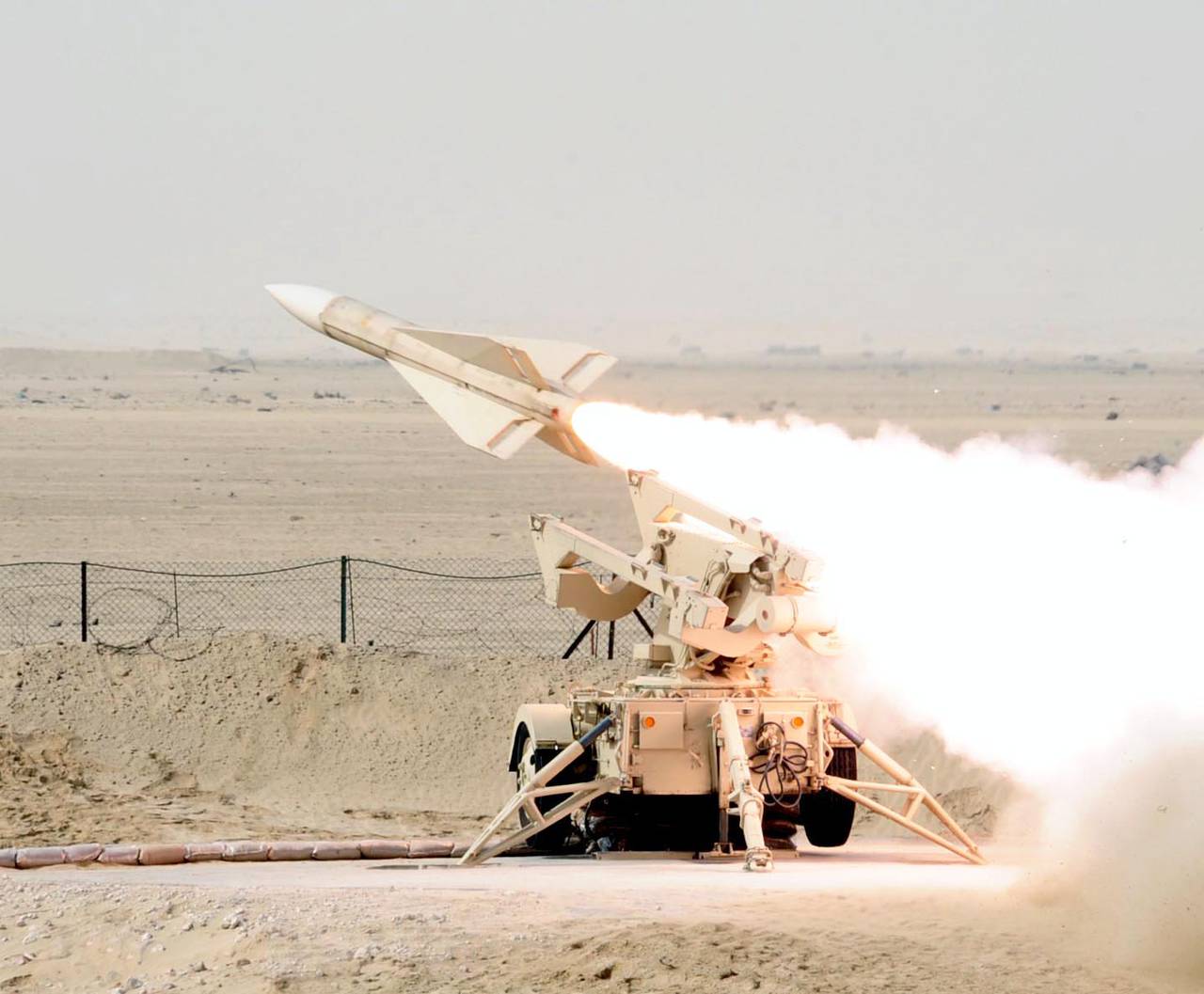
Delivery to other countries
First HAWK missile systems for the U.S. military were made in 1960. A year earlier, the U.S., Belgium, Germany, Italy, the Netherlands and France signed an agreement on joint production of new SAMs in European enterprises. A little later parties to the treaty have received orders from Greece, Denmark and Spain, who were to receive HAWK SAM European production. Israel, Japan, Sweden, in turn, ordered the technique directly from the United States. In the late sixties the United States put the first anti-aircraft systems in South Korea and Taiwan, and Japan also helped with the organization of licensed production.
In the late seventies European operators engaged in modernizing its systems MIM-23 HAWK on the American project. Belgium, Germany, Greece, Denmark, Italy, the Netherlands and France had a revision of existing systems in the first and second phases of the American project. In addition, Germany and the Netherlands alone improved existing facilities, equipping them with additional means of infrared target detection. Infrared camera mounted on a radar illumination, between its antennas. According to some reports, this system allows the detection of targets at ranges up to 80-100 kilometers.
Military Denmark wished to obtain complexes otherwise improved. The Danish HAWK SAM installed optoelectronic detection and tracking of targets. The complex introduced two cameras designed for the detection of targets at ranges of up to 40 and up to 20 kilometers. According to some sources, after this upgrade Danish anti-aircraft gunners were able to watch over the situation with only optoelectronic systems include radar and only after moving targets at a distance necessary for an effective attack.
SAMs MIM-23 HAWK is available in 25 countries in Europe, Middle East, Asia and Africa. In total, several hundred sets made SAM and about 40 thousand missiles several modifications. A large part of country operators to date refused HAWK systems because of their obsolescence. For example, the United States Marine Corps in the last U.S. military finally ceased use of all systems of family MIM-23 at the beginning of two-thousand years.
Nevertheless, some countries continue to operate SAM HAWK various modifications and do not plan to abandon them. For example, a few days ago it was reported that Egypt and Jordan are still using complexes HAWK modifications later, wish to extend the life of existing missiles. To do this, Egypt intends to order the United States 186 solid motors for missiles MIM-23, and Jordan - 114. Total cost of the two contracts will be about 12.6 million U.S. dollars. Supply of new rocket engines allow countries customers continue to use the HAWK air defense systems in the next few years.
Of great interest is the fate of complexes HAWK, set in Iran. For several decades, the Iranian military exploit a number of systems in this family. According to some reports, after the break with the United States alone, Iranian specialists spent several upgrades available SAM using available components. In addition, at the end of the last decade was a complex Mersad with several types of missiles, which is a deep modernization of the U.S. system. Accurate information about the development of Iran's missing. According to some sources, the Iranian designers managed to increase the range of up to 60 kilometers.
Combat use
Despite the fact that SAM MIM-23 HAWK was developed in the United States to arm its own army, U.S. troops have not had to use it to destroy enemy planes or helicopters. For this reason, the first aircraft shot down by a missile MIM-23 was recorded at the expense of Israeli gunners. June 5, 1967 Israel attacked its own air defense fighter Dassault MD.450 Ouragan. Damaged car could fall on the territory of the Nuclear Research Center in Dimona, which is why air defense units had to use missiles against it.
During the armed conflict following calculations Israeli HAWK SAM destroyed several dozen enemy aircraft. For example, during the Yom Kippur War 75 used missiles could destroy at least 12 aircraft.
During the Iran-Iraq war, Iran's anti-aircraft gunners were able to destroy about 40 Iraqi aircraft. Also, friendly fire hit several Iranian machines.
During this same conflict fighting account opened air defense of Kuwait. Kuwaiti complexes HAWK destroyed an Iranian F-5 fighter, intruder in the country's airspace. In August 1990, during the Iraqi invasion of Kuwait, the last anti-aircraft gunners shot down 14 enemy planes, but lost a few batteries SAM HAWK.
In 1987, the French armed forces supported Chad during the conflict with Libya. September 7 French settlement SAM MIM-23 performed a successful launch on the Libyan bomber Tu-22.
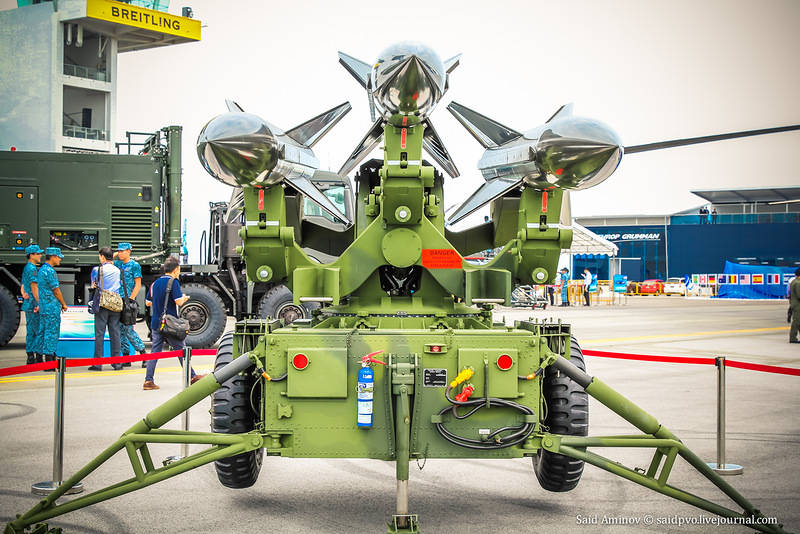


RK "Advanced Hawk" can hit supersonic aerial targets at ranges from 1 to 40 km altitude and 0.03 - 18 km (maximum values of range and altitude SAM defeat "Hawk" are respectively 30 and 12 km) and is able to shoot in adverse weather conditions and applying interference
***
Summer turned 54 since the adoption of SAM HAWK for the U.S. Army. For anti-aircraft systems such age is unique. Nevertheless, in spite of a few upgrades, USA yet ceased operation complexes MIM-23 at the beginning of the last decade. Following the United States, several European countries have removed from these weapons systems. Time takes its toll, and even the most recent modification of aircraft missile systems do not fully meet modern requirements.
At the same time, however, most countries at one time bought SAM MIM-23, continue its operation.Moreover, some states even intend to upgrade and life extension as Egypt or Jordan. Do not forget about Iran, which used American development as a basis for your own project. All these facts can serve as proof that the anti-aircraft missile system MIM-23 HAWK proved to be one of the most successful systems in its class. A number of countries have chosen this defense system and continue its operation until now. Nevertheless, despite all its merits, HAWK SAM outdated and needs to be replaced. Many developed countries have long blamed outdated equipment and put on watch new anti-aircraft systems with higher performance. Apparently, a similar fate awaits soon and antiaircraft complexes HAWK, protecting the skies of other countries.
http://rbase.new-factoria.ru/
http://pvo.guns.ru/
http://designation-systems.net/
http://lenta.ru/
-------------------------------------
Sistem Harwat memegang peranan penting dalam hal ini, sehingga Rudal ini mampu berumur 50 tahun.
Bahkan dengan modifikasi beberapa komponen, Rudal malah bertambah baik performancenya.
Bagaimana dengan Rudal yg pernah di punyai Indonesia, hampir semuanya sudah "pension" sebelum pernah menginjak usia ke -20 tahun.
Hampir semua karena masalah propelan.
Karena di "ganjal" MTCR, seperti beberapa kali di lansir pejabat LAPAN yg berkompeten di masalah roket.
Tapi kalo menurut beliau yg sangat tahu masalah MTCR di formil ini, menulis bahwa g masalah dengan MTCR, karena kata beliau Indonesia tidak ikut menandatangani ratifikasinya.
Mana yang benar?
Ada lagi yg komentar bahwa karena sudah usia lanjut, maka aerodinamika juga sudah rusak, padahal menurut saya masih ada "test bench rudal" (Base Wokshop = BWS) yg masih sangat layak untuk kalibrasi komponen rudal, diluar propelan.
Terbukti Rudal "HAWK" sudah termasuk sepuh berusia 50 tahun, namun masih tetap exist.
In 1960, the U.S. Army adopted a new anti-aircraft missile system MIM-23 HAWK. The operation of these systems in the U.S. military continued until the early two-thousand years, when they have been completely superseded by more modern means of destruction of air targets. Nevertheless, the HAWK missile systems of various modifications are still in use in several countries. Despite his age, family SAM MIM-23 still remains one of the most common systems in its class.

The first draft
Working on a new air defense missile system started in 1952. During the first two years of research organizations of the United States, examine the possibility of creating a semi-active radar SAM guidance system and find out what technologies are necessary for the appearance of such military equipment. Already at this stage, the program create air defense system got its name. As a notation for future aircraft missile systems was chosen words backronym Hawk («Hawk») - Homing All the Way Killer («Interceptor controlled throughout the flight.")
Preliminary work has shown the existing capabilities of American industry and allowed to start development of a new air defense system. In mid-1954 the Pentagon and several companies have signed contracts for the development of the various components of the complex HAWK. In accordance with these firm Raytheon was to create a guided missile, and from the Northrop was required to develop all the terrestrial components of the complex: the launcher, radar, control system and auxiliary machines.
The first test launch of the new model were held in June 1956. HAWK SAM test lasted for a year, after which the project developers have begun to remedy the deficiencies identified. In the summer of 1960 the U.S. military adopted a new anti-aircraft system into service under the designation MIM-23 HAWK. Soon after the serial delivery systems to combat units. Later in connection with the start of production of new anti-aircraft base modifications received renewed designation - MIM-23A.
The structure of the complex HAWK anti-aircraft guided missile were included MIM-23 self-propelled launcher, radar detection and illumination purposes, radar rangefinder control post and the command post of the battery. In addition, the calculation of SAM is located near the auxiliary equipment for transport and charge different models of machines.
Aerodynamic shape missiles MIM-23 was formed in the early stages of work on the project and since then did not undergo any major changes. Guided missile had a length of 5.08 meters and a diameter of 0.37 m hull aft of the rocket had X-shaped wing span of 1.2 m with rudders over the entire width of the trailing edge. Launch mass - 584 kg, 54 kg accounted for the high-explosive fragmentation warhead. Features rocket MIM-23A, equipped with a solid engine, allowing you to attack targets at ranges of 2-25 km and altitudes of 50-11000 m Probability of hitting one rocket declares at 50-55%.
To monitor the airspace and target detection in the HAWK SAM was included radar AN/MPQ-50. During one of the first upgrades in the equipment antiaircraft complex was introduced radar detecting low-altitude targets AN/MPQ-55. Both systems were equipped with radar antenna rotation synchronization. With their help, managed to eliminate all the "dead zone" around the position of the radar. MIM-23A missile equipped with semi-active radar guidance system. For this reason, the complex was introduced HAWK radar target illumination. AN/MPQ-46 illumination station could not only provide guidance missiles, but also to determine the distance to the target. Features Allows radar detection of enemy bombers at a distance of 100 kilometers.
For new missile launcher was created with three guides. This system could be carried out in a self-propelled and towed versions. After detection of the target and determine its zenith complex coordinate calculation was deployed launcher toward the target and enable locator illumination. Homing missiles MIM-23A could capture goal as before the launch and in flight. Guidance managed ammunition produced by the method of proportional convergence. When approaching missile to the target by a predetermined distance radio controlled fuses gave the command to undermine fragmentation warhead.
For delivery of missiles and equipment to position the launcher was developed transport and loading vehicle M-501E3. Machine on a light crawler equipped with the charging device with hydraulic allows you to put on three rocket launcher at the same time.
Anti-aircraft missile complex MIM-23A HAWK has demonstrated the ability to create a system of this class that uses semi-active radar guidance. However, inadequate component base and technologies affected the real possibilities of the complex. Thus, the base case HAWK could simultaneously attack a single target, and a corresponding effect on its combat capabilities. Another serious problem was a small electronics resource: some modules that used vacuum tubes, MTBF does not exceed 40-45 hours.

M192 launcher

Transport-loading machine M-501E3

Pulse radar targeting AN/MPQ-50

Radar targeting AN/MPQ-48

Upgrade Projects
Anti-aircraft MIM-23A HAWK has significantly increased the potential defense of U.S. troops, but the shortcomings questioned his fate. Required to upgrade capable to infer the characteristics of systems to an acceptable level. Already in 1964, started work on the project Improved HAWK or I-HAWK («Superior HAWK»). During this upgrade was supposed to significantly improve the characteristics of the missiles, as well as update the terrestrial components of the complex, including the use of digital equipment.
Basis became modernized SAM missile modification MIM-23B. She received an updated avionics and a new solid-propellant motor. Rocket design and as a consequence, the dimensions remain the same, but increased the starting weight. It gained up to 625 pounds, upgraded missile has expanded its capacity. Now interception range ranged from 1 to 40 kilometers, the height - from 30 meters to 18 km. New solid rocket motor provided MIM-23B maximum speed of 900 m / s.
The biggest innovation in the electronic components Improved HAWK SAM was the use of a digital processing system of data from radar stations. In addition, notable changes were themselves radar. According to some reports, after modifications to the program I-HAWK time between failures of electronic systems has grown to 150-170 hours.
First SAMs new modification to the troops arrived in 1972. The modernization program continued until 1978. Constructed and updated during the repair complexes helped significantly improve the defense capabilities of military defense.
Soon after the establishment of the project Improved HAWK launched a new program called HAWK PIP (HAWK Product Improvement Plan - «improvement plan complex HAWK»), divided into several phases. The first of these was carried out until 1978. During the program's first phase missile systems got upgraded radar to detect targets AN/MPQ-55 ICWAR and IPAR, which increased the size of the controlled space.
From 1978 until the mid eighties HAWK system developers have been working the second phase. Radar target illumination AN/MPQ-46 was replaced by a new system AN/MPQ-57. Furthermore, some of the complex ground-based equipment units on the basis of the lamps have been replaced by the transistor. By the mid-eighties in the equipment I-HAWK SAM was included optoelectronic station of detection and tracking of targets OD-179/TVY. This system has improved the combat capabilities of the entire complex in difficult noise conditions.
In 1983-89 the last third phase of modernization. Global changes have electronic equipment, most of which has been replaced by modern digital components. In addition, modernization passed radar detection and target illumination. An important innovation was the third phase of the system LASHE (Low-Altitude Simultaneous Hawk Engagement - «low-level simultaneous destruction"), through which one anti-aircraft system could simultaneously attack multiple targets.
After the second phase of modernization of the complexes Improved HAWK was recommended to change the structure of anti-aircraft batteries. The main unit of the fire was the SAM battery, which included depending on the situation could be two (standard battery) or three (reinforced) platoon. Standard composition meant use of basic and advanced fire platoons reinforced - one basic and two advanced. The composition of the batteries were included command post TSW-12 Clearinghouse MSQ-110, radar detection and AN/MPQ-50 AN/MPQ-55 and radar rangefinder AN/MPQ-51. The composition of each of the two or three main firing platoons were one radar illumination AN/MPQ-57, three launchers and several pieces of auxiliary equipment. In addition to the composition of the platoon advanced radar illumination and launchers included platoon command post MSW-18 and radar detection AN/MPQ-55.
Since the early eighties has created several new modifications guided missile MIM-23. Thus, the missile MIM-23C, which appeared in 1982, received an update semi-active homing head enables it to operate in conditions of enemy use of EW systems. According to some, this modification appeared "thanks" to the Soviet system of electronic warfare that was used by the Iraqi Air Force during the war with Iran. In 1990 there was a rocket MIM-23E, also enjoyed a greater resistance to interference opponent.
In the mid-nineties was created missile MIM-23K. Previous ammunition family she has a more powerful engine and other features. Modernization will bring range of up to 45 kilometers, the maximum height of hitting target - up to 20 km. In addition, the missile MIM-23K has a new warhead with ready fragments weighing 35 g each. For comparison, the fragments of the previous missile warheads weighed 2 grams. It was argued that an upgraded warhead will allow the new guided missile to destroy tactical ballistic missiles.

Delivery to other countries
First HAWK missile systems for the U.S. military were made in 1960. A year earlier, the U.S., Belgium, Germany, Italy, the Netherlands and France signed an agreement on joint production of new SAMs in European enterprises. A little later parties to the treaty have received orders from Greece, Denmark and Spain, who were to receive HAWK SAM European production. Israel, Japan, Sweden, in turn, ordered the technique directly from the United States. In the late sixties the United States put the first anti-aircraft systems in South Korea and Taiwan, and Japan also helped with the organization of licensed production.
In the late seventies European operators engaged in modernizing its systems MIM-23 HAWK on the American project. Belgium, Germany, Greece, Denmark, Italy, the Netherlands and France had a revision of existing systems in the first and second phases of the American project. In addition, Germany and the Netherlands alone improved existing facilities, equipping them with additional means of infrared target detection. Infrared camera mounted on a radar illumination, between its antennas. According to some reports, this system allows the detection of targets at ranges up to 80-100 kilometers.
Military Denmark wished to obtain complexes otherwise improved. The Danish HAWK SAM installed optoelectronic detection and tracking of targets. The complex introduced two cameras designed for the detection of targets at ranges of up to 40 and up to 20 kilometers. According to some sources, after this upgrade Danish anti-aircraft gunners were able to watch over the situation with only optoelectronic systems include radar and only after moving targets at a distance necessary for an effective attack.
SAMs MIM-23 HAWK is available in 25 countries in Europe, Middle East, Asia and Africa. In total, several hundred sets made SAM and about 40 thousand missiles several modifications. A large part of country operators to date refused HAWK systems because of their obsolescence. For example, the United States Marine Corps in the last U.S. military finally ceased use of all systems of family MIM-23 at the beginning of two-thousand years.
Nevertheless, some countries continue to operate SAM HAWK various modifications and do not plan to abandon them. For example, a few days ago it was reported that Egypt and Jordan are still using complexes HAWK modifications later, wish to extend the life of existing missiles. To do this, Egypt intends to order the United States 186 solid motors for missiles MIM-23, and Jordan - 114. Total cost of the two contracts will be about 12.6 million U.S. dollars. Supply of new rocket engines allow countries customers continue to use the HAWK air defense systems in the next few years.
Of great interest is the fate of complexes HAWK, set in Iran. For several decades, the Iranian military exploit a number of systems in this family. According to some reports, after the break with the United States alone, Iranian specialists spent several upgrades available SAM using available components. In addition, at the end of the last decade was a complex Mersad with several types of missiles, which is a deep modernization of the U.S. system. Accurate information about the development of Iran's missing. According to some sources, the Iranian designers managed to increase the range of up to 60 kilometers.
Combat use
Despite the fact that SAM MIM-23 HAWK was developed in the United States to arm its own army, U.S. troops have not had to use it to destroy enemy planes or helicopters. For this reason, the first aircraft shot down by a missile MIM-23 was recorded at the expense of Israeli gunners. June 5, 1967 Israel attacked its own air defense fighter Dassault MD.450 Ouragan. Damaged car could fall on the territory of the Nuclear Research Center in Dimona, which is why air defense units had to use missiles against it.
During the armed conflict following calculations Israeli HAWK SAM destroyed several dozen enemy aircraft. For example, during the Yom Kippur War 75 used missiles could destroy at least 12 aircraft.
During the Iran-Iraq war, Iran's anti-aircraft gunners were able to destroy about 40 Iraqi aircraft. Also, friendly fire hit several Iranian machines.
During this same conflict fighting account opened air defense of Kuwait. Kuwaiti complexes HAWK destroyed an Iranian F-5 fighter, intruder in the country's airspace. In August 1990, during the Iraqi invasion of Kuwait, the last anti-aircraft gunners shot down 14 enemy planes, but lost a few batteries SAM HAWK.
In 1987, the French armed forces supported Chad during the conflict with Libya. September 7 French settlement SAM MIM-23 performed a successful launch on the Libyan bomber Tu-22.



RK "Advanced Hawk" can hit supersonic aerial targets at ranges from 1 to 40 km altitude and 0.03 - 18 km (maximum values of range and altitude SAM defeat "Hawk" are respectively 30 and 12 km) and is able to shoot in adverse weather conditions and applying interference
***
Summer turned 54 since the adoption of SAM HAWK for the U.S. Army. For anti-aircraft systems such age is unique. Nevertheless, in spite of a few upgrades, USA yet ceased operation complexes MIM-23 at the beginning of the last decade. Following the United States, several European countries have removed from these weapons systems. Time takes its toll, and even the most recent modification of aircraft missile systems do not fully meet modern requirements.
At the same time, however, most countries at one time bought SAM MIM-23, continue its operation.Moreover, some states even intend to upgrade and life extension as Egypt or Jordan. Do not forget about Iran, which used American development as a basis for your own project. All these facts can serve as proof that the anti-aircraft missile system MIM-23 HAWK proved to be one of the most successful systems in its class. A number of countries have chosen this defense system and continue its operation until now. Nevertheless, despite all its merits, HAWK SAM outdated and needs to be replaced. Many developed countries have long blamed outdated equipment and put on watch new anti-aircraft systems with higher performance. Apparently, a similar fate awaits soon and antiaircraft complexes HAWK, protecting the skies of other countries.
http://rbase.new-factoria.ru/
http://pvo.guns.ru/
http://designation-systems.net/
http://lenta.ru/
-------------------------------------
Sistem Harwat memegang peranan penting dalam hal ini, sehingga Rudal ini mampu berumur 50 tahun.
Bahkan dengan modifikasi beberapa komponen, Rudal malah bertambah baik performancenya.
Bagaimana dengan Rudal yg pernah di punyai Indonesia, hampir semuanya sudah "pension" sebelum pernah menginjak usia ke -20 tahun.
Hampir semua karena masalah propelan.
Karena di "ganjal" MTCR, seperti beberapa kali di lansir pejabat LAPAN yg berkompeten di masalah roket.
Tapi kalo menurut beliau yg sangat tahu masalah MTCR di formil ini, menulis bahwa g masalah dengan MTCR, karena kata beliau Indonesia tidak ikut menandatangani ratifikasinya.
Mana yang benar?
Ada lagi yg komentar bahwa karena sudah usia lanjut, maka aerodinamika juga sudah rusak, padahal menurut saya masih ada "test bench rudal" (Base Wokshop = BWS) yg masih sangat layak untuk kalibrasi komponen rudal, diluar propelan.
Terbukti Rudal "HAWK" sudah termasuk sepuh berusia 50 tahun, namun masih tetap exist.
0
9.5K
29
Thread Digembok
Urutan
Terbaru
Terlama
Thread Digembok
Komunitas Pilihan